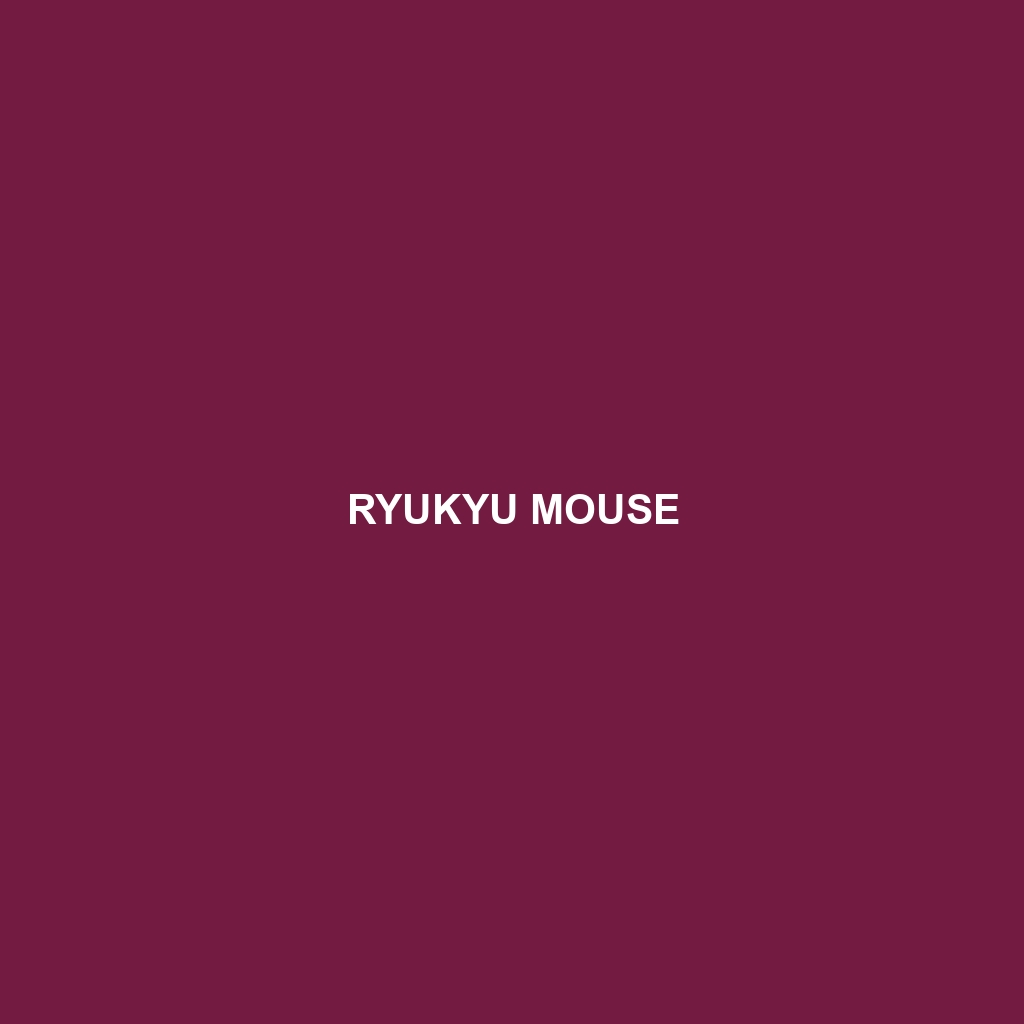Ryukyu Mouse: A Comprehensive Species Description
Common Name: Ryukyu Mouse
Scientific Name: Mus Nicobarensis
Habitat
The Ryukyu Mouse is primarily found in the Ryukyu Islands of Japan, particularly on islands such as Okinawa and Amami. This species thrives in subtropical forests, grasslands, and shrublands, adapting well to various environmental conditions that provide ample cover and food sources. They often inhabit areas with dense vegetation, which offers protection from predators and harsh weather conditions.
Physical Characteristics
The Ryukyu Mouse is a small rodent, typically measuring about 10 to 15 centimeters in body length, excluding the tail. It features a slender body and a long, scaly tail nearly as long as its body. The fur is generally a soft brown to grayish hue, with lighter underparts. Distinctive features include large round ears and a pointed snout, making it easily recognizable among other mouse species in the region. This unique coloration serves as camouflage within its forest habitat.
Behavior
Ryukyu Mice are primarily nocturnal, becoming active during the night to forage for food and social interactions. These mice are known for their agile movements and are excellent climbers, often residing in shrubs and trees to escape ground predators. They exhibit social behaviors, often seen in small groups, and communicate through a series of squeaks and body movements. Their ability to adapt to various environments contributes heavily to their survival.
Diet
The diet of the Ryukyu Mouse primarily consists of seeds, fruits, and insects. They are opportunistic feeders, often foraging for food on the forest floor and in the tree canopies. Their feeding habits vary seasonally, driven by the availability of different food sources throughout the year. This adaptability is key to their survival in the diverse ecological niches they occupy.
Reproduction
Ryukyu Mice have a relatively high reproductive rate, with breeding occurring year-round under favorable conditions. A typical litter can consist of up to five young, born after a gestation period of about 20 days. The offspring are altricial, meaning they are born blind and hairless, requiring considerable parental care until they become independent around three weeks of age. These mice often display nurturing behaviors, reinforcing family bonds during the early stages of the young’s life.
Conservation Status
The conservation status of the Ryukyu Mouse is currently listed as vulnerable, primarily due to habitat loss from human development and natural disasters. Conservation efforts are essential to protect their ecosystems and ensure the survival of this unique species. Protecting their natural habitats is crucial for maintaining their populations in the wild.
Interesting Facts
– The Ryukyu Mouse has adapted remarkably well to its island habitat, showcasing variations in size and coloration compared to mainland mouse species.
– Known for their agility and climbing ability, these mice can often be spotted scaling tree trunks in search of food.
Role in Ecosystem
In the ecological web of the Ryukyu Islands, the Ryukyu Mouse plays a significant role as both a seed disperser and a prey species. By feeding on fruits and seeds, they help facilitate plant growth and maintain the health of their habitats. Additionally, they serve as a vital food source for various predators, contributing to the balance of the ecosystem. Conservation of this species is thus integral to the well-being of its environment and the biodiversity it supports.
